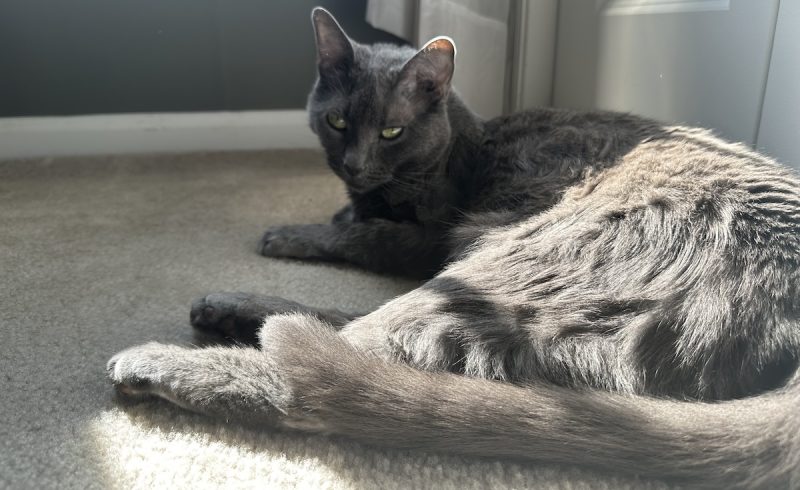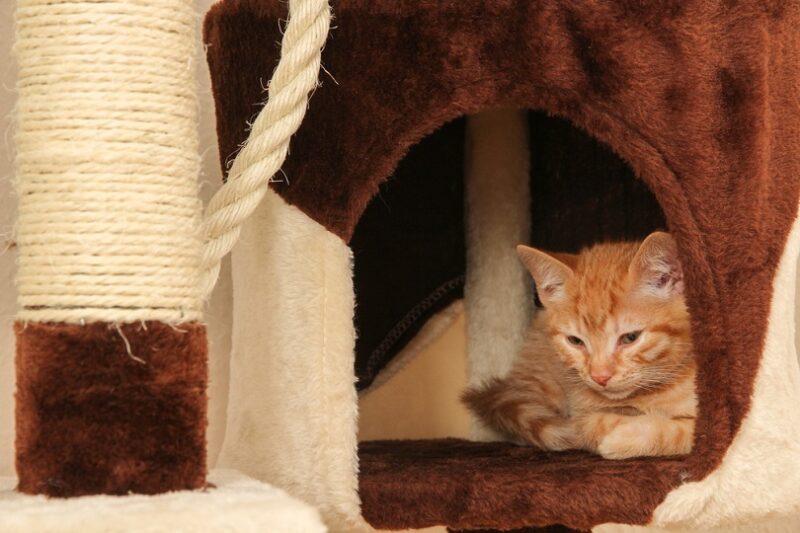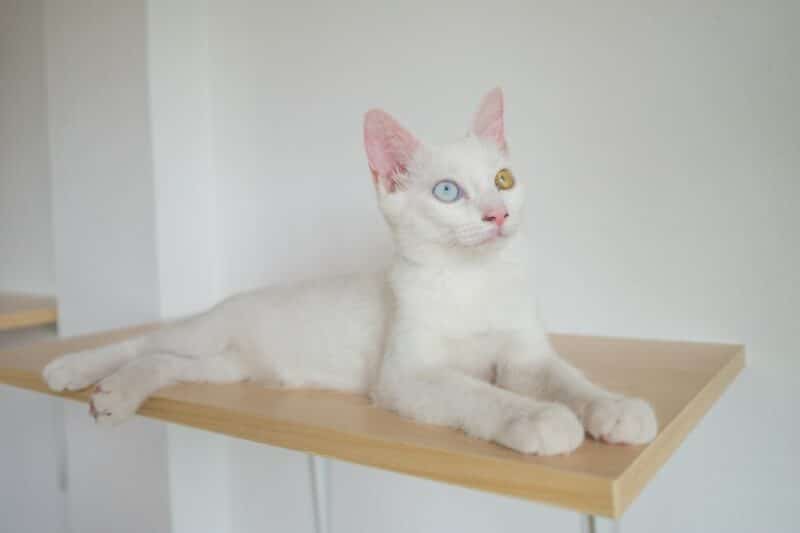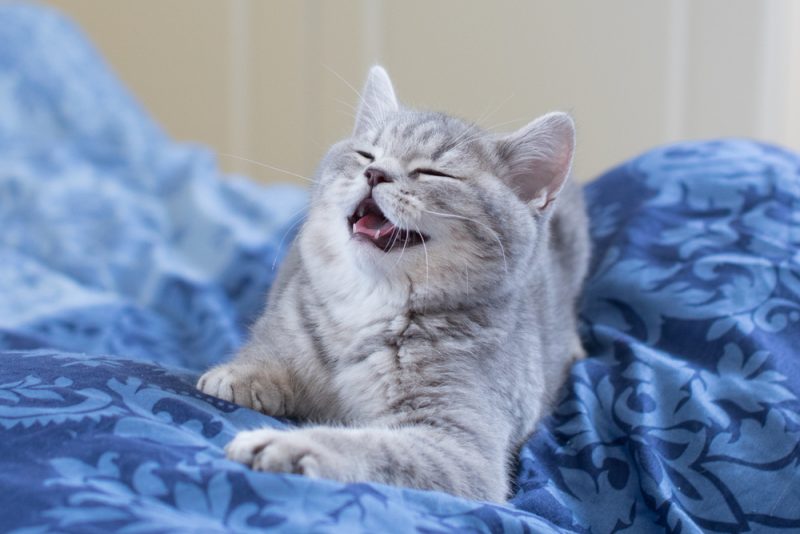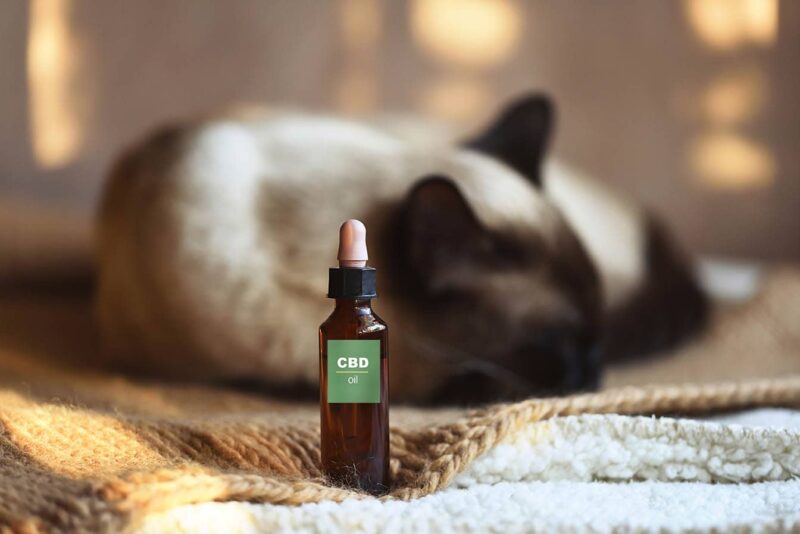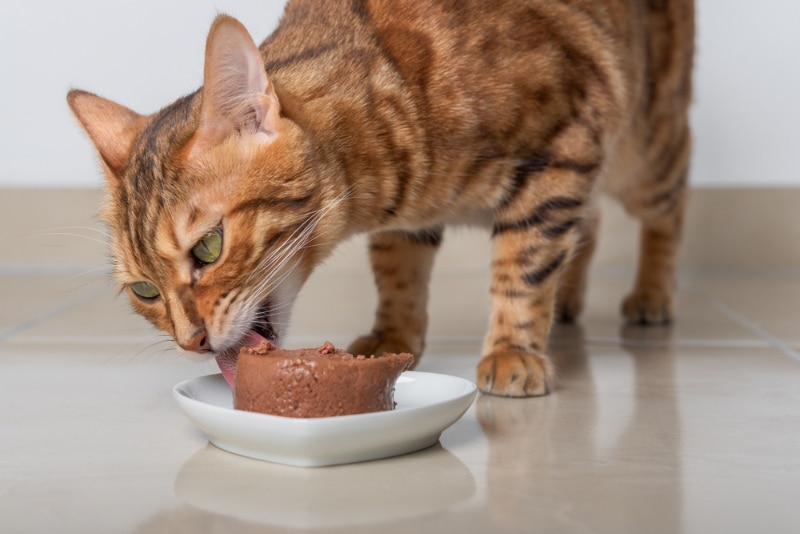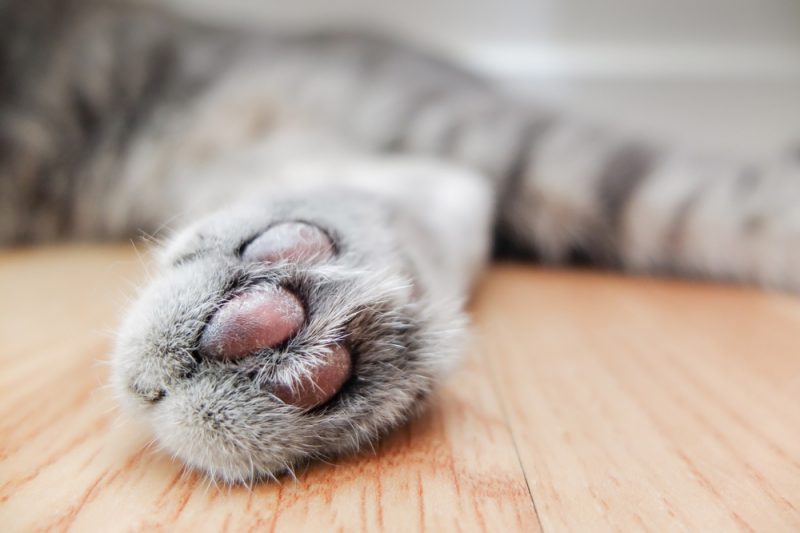In this article
Cats are often unfairly stereotyped as moody and unpredictable animals. While many dedicated cat lovers would argue otherwise, our feline friends sometimes display behavior that’s hard to understand. For example, some cats seem like they enjoy petting but will quickly turn and bite your arm. If that scenario hits close to home, here are six common reasons a cat may grab and bite your arm, along with what to do about them.

The 6 Reasons Why Your Cat Grabs and Bites You
1. Something Hurts
Your cat may suddenly bite your arm because you’ve touched a sensitive or painful area on their body. Most cats dislike having their bellies or the base of their tail scratched and petted because they are naturally more sensitive to touch.
Your cat could also have a hidden injury that you touched by accident. Cats can also develop a mysterious condition called feline hyperesthesia syndrome (FHS) or twitchy cat disease.1 One of the signs of FHS is sensitivity to petting and touch in certain areas.
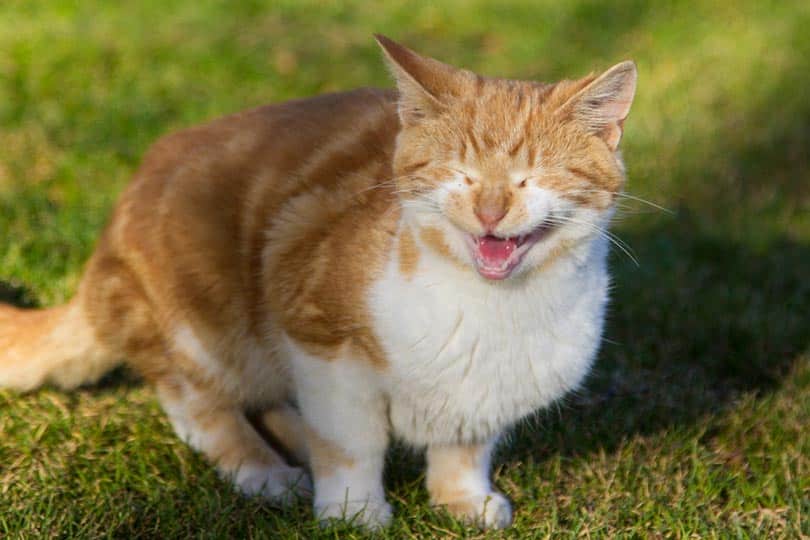
- Don’t pet your cat on the belly or tail. If you suspect an injury or FHS, have your cat evaluated by a veterinarian. Other signs of FHS may include twitching, hyperactivity, excessive vocalizing, and licking or chewing at the body.
If you are concerned about the health and well-being of your pet, seek veterinary advice for the best course of action.
If you need to speak with a vet but can't get to one, head over to PangoVet. It's an online service where you can talk to a vet online and get the advice you need for your pet — all at an affordable price!

2. Trying to Play
Another reason your cat may bite your arm is that they’re feeling playful and trying to use you as a toy. If you’ve ever watched two cats play together, you’ll notice behaviors such as biting and bunny-kicking are all part of the fun.
Your cat may nip you to draw you into a game. Play behavior in cats is typically a way to use their hunting and stalking instincts, but it can be painful when your arm becomes the prey.
- Redirect your cat’s play behavior to a toy rather than your arm. Don’t encourage your cat to continue playing with your hand or arm; make sure everyone else in the house doesn’t either.
3. Redirected Aggression
Sometimes, your cat bites your arm because they can’t sink their teeth into their real target. Redirected aggression is when a cat is upset by something, such as a stray cat outside.
Because they can’t go after the source of their stress, they attack the next closest thing, in this case, your arm. A loud noise or a housemate they don’t like can also provoke this reaction in your cat.
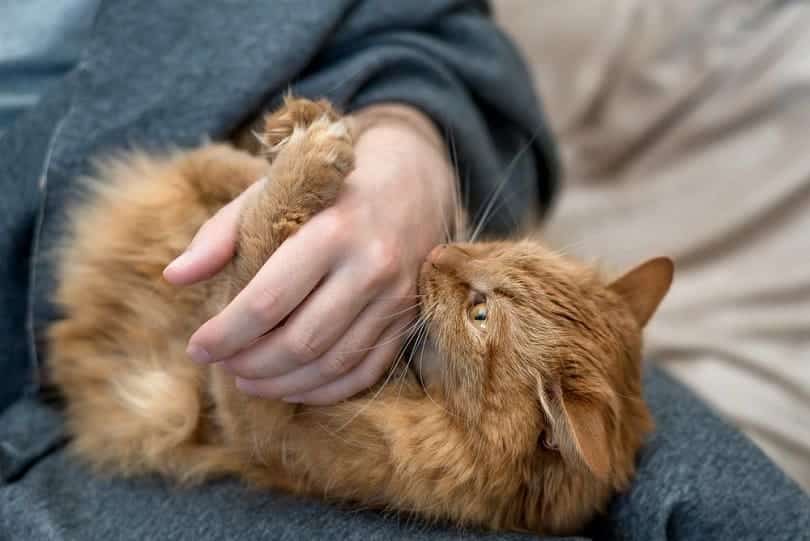
- If an outside cat is the problem, keep your kitty from seeing the stray or keep them away from your house. Housemate drama can be more complicated, but you can start by ensuring all cats have their own litter box, bed, bowls, and spaces to avoid territorial clashes. Give each cat plenty of attention so they don’t need to compete for your love.
4. Grooming
Cats can lick and bite their owner’s arm as part of grooming behavior. Cats use grooming to keep clean, socialize, and communicate with each other. It doesn’t always mean your cat thinks you’re dirty.
Even though you may appreciate the gesture, try not to let your cat groom you to prevent transmitting bacteria or diseases from their mouth. Kids, pregnant people, the elderly, and anyone with a weak immune system should be especially cautious.
- Gently remove your arm from your cat’s grooming. Redirect their attention with a toy if necessary. Make sure your cat is getting plenty of daily interaction with you so they don’t feel the need to attract attention.
5. Tired of Attention
Often, a cat will bite an arm or hand suddenly because they are tired of attention and petting. While this may seem like an overreaction, cats generally give other warning signs before they turn to their teeth. Owners don’t always recognize them for what they are and keep petting their kitty.
If they’re fed up with petting, the cat may eventually bite. Unfortunately, because this biting almost always causes humans to stop petting them, the cat’s behavior is immediately reinforced.
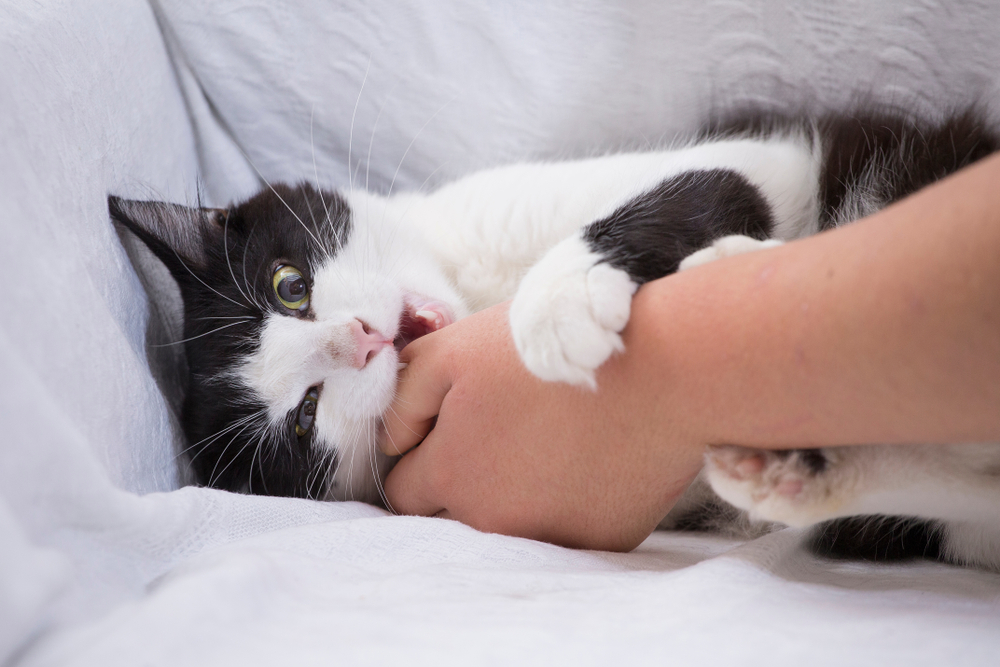
- Pay attention to the early warning signs and leave your cat alone before they feel the need to escalate. Common indicators your kitty feels unhappy include flattened ears, a crouched stature, and a twitching tail.
6. Never Learned Biting is Wrong
Adult cats may bite their owners’ arms because they never learned the behavior was wrong when they were younger. Kittens generally learn bite inhibition, or how hard is too hard, as they socialize and play with their mother and littermates. Baby cats who leave their mother too early or who are bottle-fed miss out on this vital lesson and may grow up as biters.
If you adopt an adult cat, there’s no way to know how the previous owners handled biting behavior. They may have encouraged the kitty to play with their hands or arms. Because of that, the cat doesn’t understand that they’re doing anything wrong.
- Don’t separate kittens from their mother before at least 8 weeks of age. Never let a bottle-raised kitten bite and play with your hand or arm. Let them play and socialize with other kittens the same age if possible. If you adopt an adult cat with bad habits, redirect them to a toy as soon as possible. Never punish a cat for biting.

How to Stop Your Cat from Biting
No matter why your cat is biting your arm, two techniques can help.
1. Redirection
The first is one we already mentioned: redirection. This training technique is helpful for problematic cat behaviors, including scratching furniture. The idea is that you distract the cat from biting or scratching something they shouldn’t by offering them something more appropriate.
For biting, that usually means keeping a toy within arm’s reach. As soon as the cat starts biting or trying to wrestle your arm, show them the toy and encourage them to play with it instead. A soft, stuffed toy or something similar is usually a good option.
Looking for toys that will cater to the many needs of your cat? The Hepper Hi-lo Cat Scratcher is one of our favorite cat products, and it will encourage your cat to get active. Its clever three-angle design offers multiple ways for your cat to climb, stretch, and exercise. Made of a sturdy plywood base and a replacement cardboard insert, this scratcher is an option that cats can enjoy for years to come. If your cat requires a little encouragement for self-play, the Hepper Catnip Mice Toy Set is a fantastic choice for their instinctual needs. Made with natural, bite-resistant hessian fabric and filled with organic catnip. Cats can satisfy their natural prey instincts while getting the physical activity they need to thrive. At Catster, we've admired Hepper for many years, and decided to take a controlling ownership interest so that we could benefit from the outstanding designs of this cool cat company!
Image
Product
Details
Great for Exercise

Hepper Hi-Lo Cat Scratcher
Check Price
Encourages Self-Play
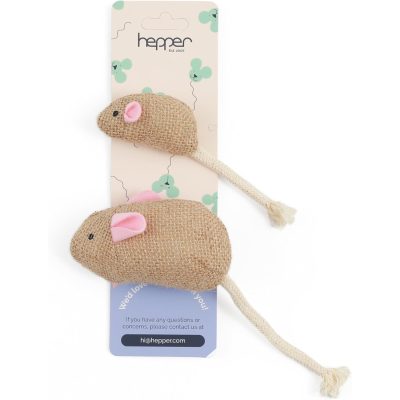
Hepper Catnip Mice Toy Set
Check Price
2. Ignoring
The second technique to try is ignoring your cat’s biting. If their goal is attention, not reacting to the bite is the last thing your cat wants to see from you. Calmly remove yourself from your cat’s reach.
Later, when the cat is calm and relaxed, offer them interaction through play or petting. This helps your cat learn that there are right and wrong ways to get attention. This technique is most effective and least painful if you can learn to spot the signs your cat is about to bite before they happen and remove yourself.

Conclusion
If your cat regularly displays aggressive behaviors beyond just grabbing your arm and biting, it’s time to talk to your veterinarian. They can rule out any medical causes, such as pain or illness, for your cat’s behavior. Once that’s done, they can suggest behavior modification techniques or prescribe medication to help. They may even refer you to a behavioral specialist. Don’t encourage your cat to bite; try to deal with their problematic behavior before it gets out of control.
Related Reads:
- Will Ignoring My Cat Make Them Like Me? Here’s How They Take It
- Why Does My Cat Grab My Hand and Bite Me? 5 Common Reasons
Featured Image Credit: Anna Kraynova, Shutterstock


